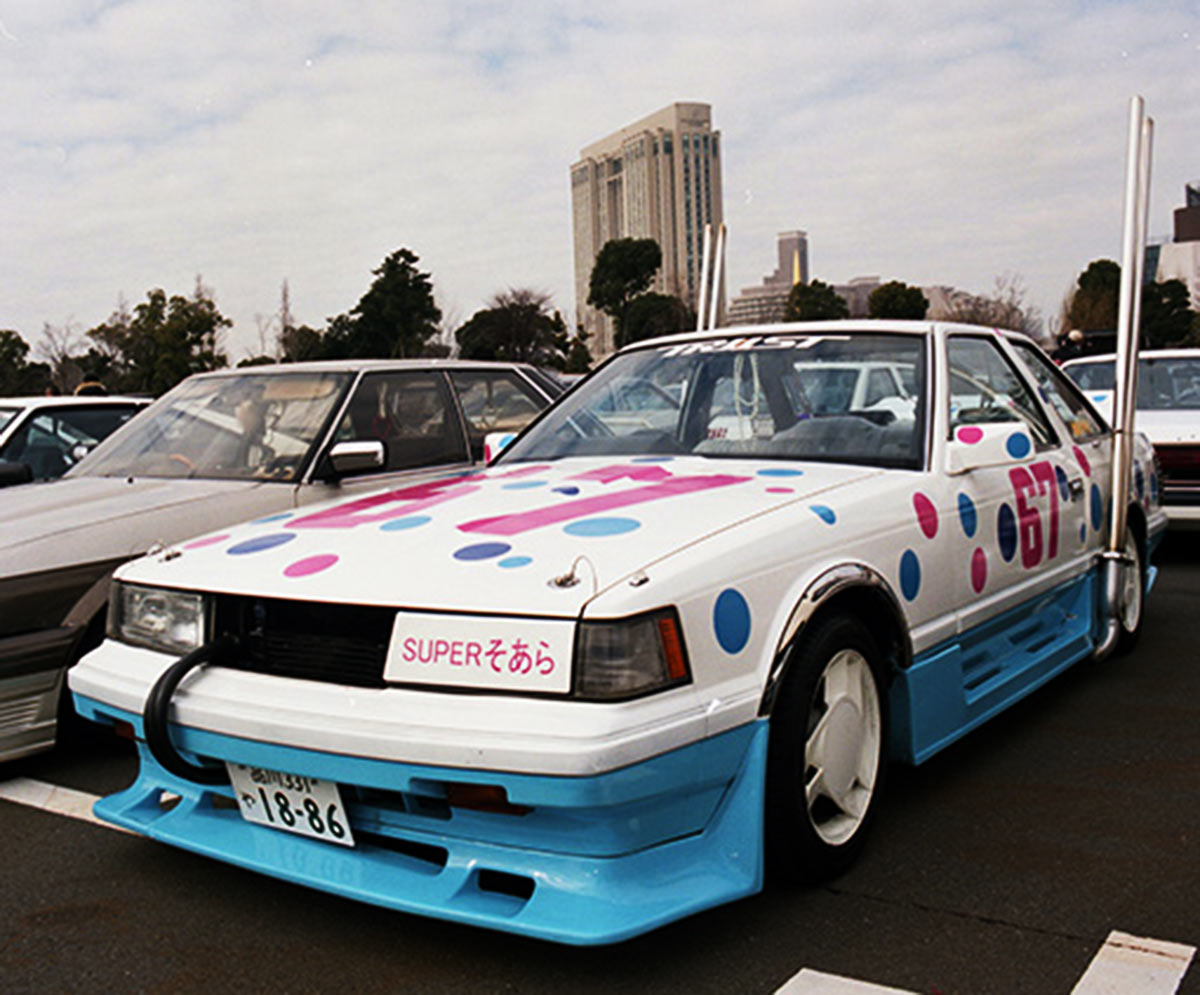Media | Articles
Bosozoku: It’s not what you’re thinking
No, Bosozoku is not an English word. And it isn’t some X-rated act occurring at a Soi Cowboy bar, either. Bosozoku is one of the strangest types of car customization in the world, though. Cars are adorned with giant cartoonish aerodynamic kits, bright paint jobs and insane exhaust pipes that extend several feet straight up into the air. Watch your step or you might trip over a lip or stub your toe on a cambered wheel. The exaggerated wide-body kits and enormous rear wings are motorsports-inspired, while sky-high exhaust pipes and overall comical appearance are influenced by manga and anime productions.
It all began in the 1970s when motorcycle gangs formed in Japan, composed of disenfranchised, lower class kids with distaste for authority and mainstream society. Japanese culture was stifling, and with society’s pressure to conform, Bosozoku gangs flourished.
It’s a frantic lifestyle — a survival of the fittest — and it makes American biker gangs look like boy scouts. Bosozoku, or “violent running tribe” in English, is where some Japanese teens found unity in rebellion, and this disappearing automotive niche has one of the worst local reputations in the world.
Being a Bosozoku member was similar to being recruited to the military, and many gang members felt validation only when praised by elder members. Taught to protect their gangs’ reputation, and no matter how badly outnumbered or beaten, they still stood and fought. The level of violence was astonishing considering the age range: “Kids” from 16 up to their early-twenties participated in the well-organized groups, and there could be as many as 13 different branches of hierarchy, including branch leaders, captains and up-and-coming captains.
Even though thrills and adrenaline rushes of random defiance were the M.O., Bosozoku gangs did dabble in occasional good deeds, like helping out an older person whose car was stuck. And another consideration: their money was more likely to be spent on their bikes and cars, not on drugs or alcohol.
Marketplace
Buy and sell classics with confidence
But more often, Bosozoku gangs were mostly recognized for making excessive amounts of noise while weaving in and out of traffic through cities large and small, often swinging tubular weapons such as bats or metal pipes and yelling at pedestrians and motorists. Damaging property and waging wars against rival gangs and authorities frequently resulted in the untimely deaths of members. Police fought back just as hard however, often knocking Bosozoku riders off of their bikes while in motion.
Imagine the sight of hundreds of motorcyclists riding down a long stretch of hilly highway, crisscrossing in and out amongst themselves, lights reflecting every which way: Intimidating, but mesmerizing. And while the gangs are diminishing, mainstream kids have adopted some of their fashions. Bosozoku motorcycles have tall rear seats that accentuate a rider’s swerving patterns. Stickers accent the rear of the seat, often depicting flags and gang-related symbols. Loud paint schemes and over-sized fairings are seen after the revving engines are heard, and the tall handlebars are bent down for easy maneuvering when running from authorities. License plates are folded upwards, and their faces are typically hidden, otherwise police would track down and arrest them.
The distinct military-style overcoats worn were used for fighting, but also for fashion and to affirm gang loyalty. Adorned with slogans, ancient Chinese characters and gang logos, the jackets are honorably passed down through Bosozoku generations. Also commonly worn are embroidered leather jackets, large round sunglasses and surgical masks. Popular hairstyles include an exaggerated pompadour and punch perms, but some fashions aren’t high-maintenance, such as shaved heads and hachimaki headbands. Bosozoku women showcase long dyed hair, high-heeled boots and makeup to give a feminine flair, and tattoos reinforce their strong independent streak.
Today, tightening laws and brute police tactics have made the teenage rebel biker gangs nearly extinct, but hints of the styling and culture has trickled into a whole new niche: flamboyant Bosozoku cars. The history stemming from Bosozoku culture understandably carries a negative slant, but the motorcycle gangs were the main cause for concern.
Some four-wheeled nuts are still involved with Bosozoku gangs while others have left the lifestyle or simply respect its history. But today, many of the crazy customizers just love the imperiled style. Even if it does sound dirty to Western ears.










